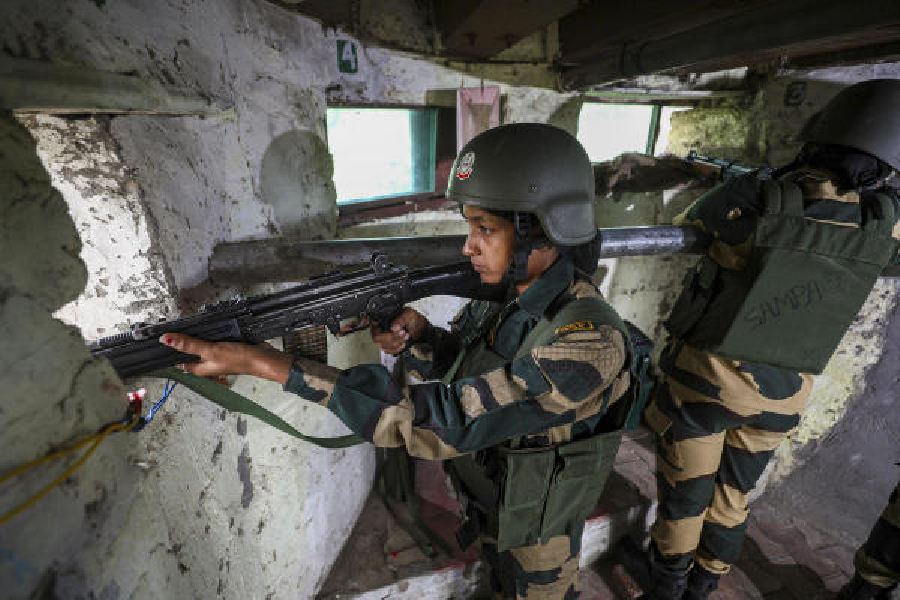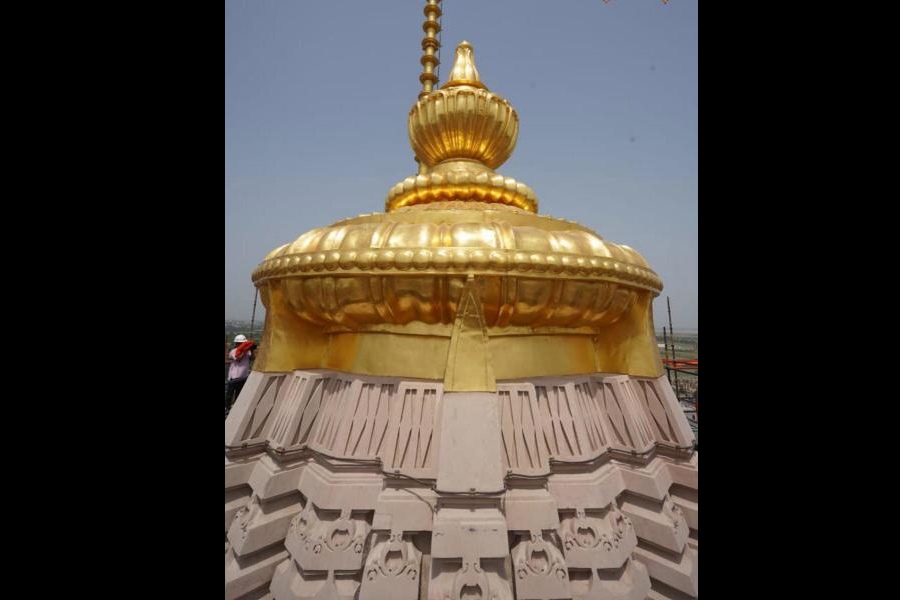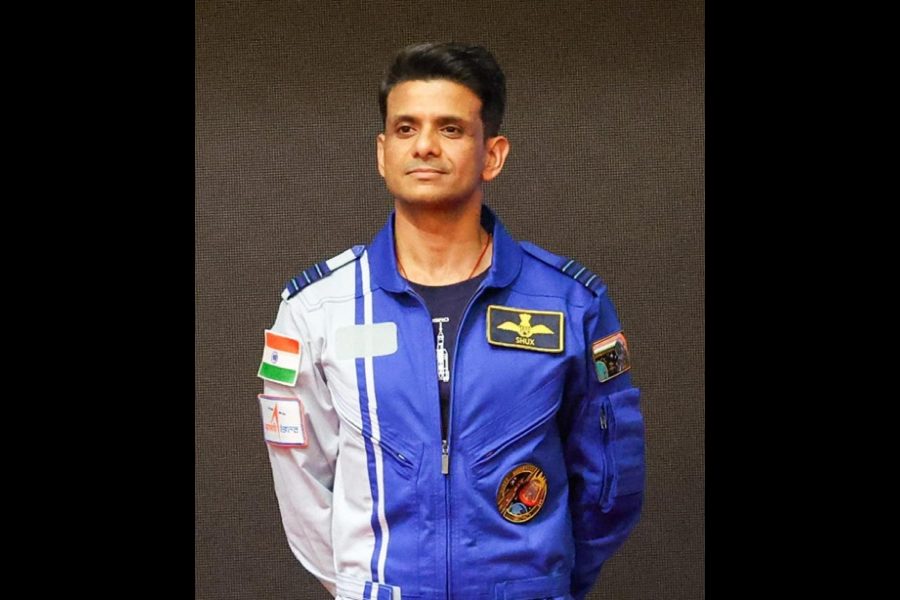 |
In the summer of 1997 in France, Brazilian Roberto Carlos kicked his way into football’s hall of fame. The ball was placed 30 metres from the opposing team’s goal post and slightly to the right. Carlos took a measured run and kicked the ball hard. The ball initially travelled far to the right and cleared the wall of defenders by almost a metre, making a ball boy standing some feet away from the goal post duck his head. And then it happened. The ball magically curved to the left and slammed into the top right-hand corner of the goal. The world was impressed. Now, however, anyone would hardly notice. Everyone will probably attribute “successful trick” to the ball's design and materials. Bayer Material Science, the German company, working for Adidas has come up with a new ball for the Fifa World Cup in Germany that promises to make goals much easier to score. Called the Teamgeist (team spirit in German), the ball combines innovative construction and new materials that exploit the laws of physics to the optimum. And we can all expect to see many more footballers to curl it like Carlos and bend it like Beckham.
But Carlos, unfortunately, was not playing with a Teamgeist. He had practised hard and knew that he could curve the ball in mid-air by hitting it at a particular velocity and with a particular spin. He had, however, probably never thought about the physics behind his magic kick.
Spinning objects
It was the German physicist Gustav Magnus who first explained the lateral deflection of a spinning object. Magnus was actually trying to determine why spinning objects like bullets deflect to one side. But the fundamental mechanism called the Magnus force also applies to a football in motion. The Magnus force comes into play when a spinning object, like a ball, travels through a fluid, in this case the air, says Dr Jayanta Bhattacharjee, professor of theoretical physics at the Indian Association for the Cultivation of Science (IACS), Calcutta.
Imagine a ball that is spinning on an axis, which is perpendicular to the flow of air. Dr Bhattacharjee says that the air on the ball’s left side, which follows the direction of airflow, travels faster than at the centre. This reduces the pressure, according to Bernoulli’s principle. However, the moving ball hampers the flow of air on the other side. Thus the air travels at a slower speed and increases the pressure on the right side of the ball. This creates an imbalance in the forces and the ball deflects to the left, Dr Bhattacharjee says. He, however, adds that surface irregularities like the stitches and the ball losing shape during play also determine the deflection. Other factors like the ball getting wet also makes it behave in a seemingly erratic manner. “The ideal situation would be one where these imperfections would be absent,” he says.
And now researchers at Bayer Material Science have developed a “rounder and even better ball” for the world's biggest sports event in 2006. “We spent three years working on this black, white and yellow ball. Finally, we were able to make the ball even rounder. The new materials ensure that it maintains its attractive appearance over a long time,” says Thomas Michaelis, project manager for ball development at Bayer Material Science.
But how round is round? “Round is relative. The Teamgeist is just one per cent away from being a perfect sphere. This makes it particularly accurate as it travels through the air,” says Michaelis. He says that his team has done away with the familiar five and six-sided sections and replaced them with propeller-shaped panels. They have also reduced the total number of sections from 32 to 14. Fewer edges and more roundness also mean fewer seams and corners and this makes it easier for players to hit the target. “A smooth, spherical and seamless surface increases the laminar flow (without any turbulence) of the ball when it is kicked. This will make it easier for more footballers to copy the spectacular achievements of Carlos or David Beckham,” Dr Bhattacharjee says.
To keep the ball in shape, Bayer’s coating specialists developed a new structure for the outer skin. To begin with, they increased the wall thickness of the ball to 1.1 millimetres. “A thicker surface shows fewer fluctuations of the curvature. Thus the increased thickness of the ball ensures that it is rounder and smoother,” Dr Bhattacharjee says.
The Bayer researchers also decided to use four different layers of material placed one on top of the other. The decisive component in ensuring an accurate trajectory of the Teamgeist is the polyurethane-based syntactic foam. “Polyurethane foam or PUF is nowadays used in pillows and mattresses. It’s a unique material that offers the elasticity of rubber combined with the toughness and durability of metal. It consists of a large number of gas-filled micro-spheres. When the foam is compressed, the air in the micro-spheres comes out. As soon as the compressive force is removed, the foam quickly returns to its original shape,” explains Dr Sankar P. Bhattacharya, a professor of physical chemistry at the IACS. When a football is kicked, the foam will ensure that there is little shrinkage at the site where the force is applied. This will help the ball to quickly return to its original round shape and maintain its optimum trajectory. “In effect the ball has become more elastic. It hardly deforms,” says Dr Bhattacharya.
 |
| The different layers of the Teamgeist’s outer layer 1. Aliphatic outer finish of Impranil: Protected iodine print; prevents abrasion of the printed surface. 2. Aliphatic intermediate coat of Impranil: Protects the ball from external influences and gives it exceptionally good elasticity. 3. Impranil syntactic coat: Consists of polyurethane containing millions of gas-filled microcells. This gives the ball its outstanding resilience and significantly improves accuracy as it flies through the air. 4. Impranil adhesive coat: Bonds the various layers to the textile substrate. 5. Special polyester/cotton fabric: Serves as the substrate |
Greater durability
Above the foam layer, the ball has an aliphatic intermediate coat (a wax-like product) to protect it from external influences such as moisture, and give it exceptional elasticity. It also protects the ball from abrasion, which ensures greater durability and gives it a perfect appearance over a long period. “The abrasion-resistant material, which is frequently used as a surface layer in the fashion industry, saves the ball from damage, especially after a punishing match. The coating very much works like surface paint used in buildings and cars,” says Dr Basab Chaudhuri, a reader at the department of Chemical Engineering at Calcutta University.
In addition to all these features, the Teamgeist, like two of its predecessors, the Tricolore and Fevernova (see box), is no longer stitched. It’s bonded with a patented thermal adhesive coat. The result is that, even in heavy rain, the ball gains scarcely any weight (at most 0.1 per cent) and it therefore takes no extra effort to control. “The era of water-saturated leather balls is definitively over. This one is virtually water-impermeable,” claims Michaelis.
All these features have impressed the football fraternity. “It’s incredible how much development and material research has gone into it. I always thought you just pumped air into the ball and that was that,” exclaims Rudi V?ller, a former player who helped Germany grab the World Cup in 1990. Football icon Beckham, too, finds reason to praise the Teamgeist. “The ball goes exactly where you want it to go,” he says. German international Bernd Schneider endorses Beckham’s comment: “With this ball you can put in perfect crosses for your forwards. And for me as a free-kick specialist, it means I can curl the ball round the wall with amazing accuracy.”
Everyone, however, may not feel so jubilant. Increased accuracy means that opposing defenders and goalkeepers will find it that more difficult to stop an accurate shot at the goal by Ronaldo, Beckham, and Company.
A tradition of innovations
 |
Tango Durlast (1978)
Football design experienced a revolution in 1978 with the introduction of the Tango Durlast. Twenty panels with “triads” created the impression of 12 identical circles. The next five FIFA World Cup tournaments, had Match Balls based on the Tango. It featured improved weather resistance qualities.
 |
Tango Espana (1982)
Adidas introduced a new ball which had rubber inlaid over the seams to prevent water from seeping through. General wear from kicking however meant the rubber began to wear after a short time and needed to be replaced during the game. The Tango Espana was last world cup ball made of genuine leather.
 |
Azteca (1986)
This was the first synthetic ball, which was rain-resistant. The Azteca was a hand-sewn ball. It consisted of an outer polyurethane coating and three lower layers, which mutually complemented one another with their different “Adicron” structures. These were intended to ensure the ball’s resistance, ability to retain its shape and its waterproof properties.
 |
Etrusco Unico (1990)
The Etrusco was a high-tech product, which was manufactured entirely from quality synthetic fibres. The lowest covering consisted of textiles impregnated with latex for form stability and resistance to tearing, the neoprene layer made the ball water-tight and the outer skin made of polyure-thane layers was used for abrasion resistance and good rebound properties.
 |
Questra (1994)
The official ball of the FIFA World Cup USA was enveloped in a layer of polystyrene foam. This not only made it more waterproof, but allowed the ball greater acceleration when kicked. The new game ball felt softer to the touch, but easier to control. Inspired by space technology, high velocity rockets and America’s “quest for the stars”, Questra set new performance standards.
 |
Tricolore (1998)
In a complete departure from the traditional black and white pattern, a coloured ball was introduced at the World Cup in France. The Tricolore sported the French red-white-blue tricolour. It used under-glass print technology with a thin layer of syntactic foam. This new foam material had better compression, making the ball softer and faster.
 |
Fevernova (2002)
The Match Ball for the FIFA World Cup hosted by South Korea and Japan was made up of thicker inner layers to increase the accuracy of the ball in flight, according to Adidas. The Fevernova was the first World Cup ball since 1978 to break with the traditional Tango design. According to Adidas, the surface of the Fevernova converts applied energy evenly at every point. Theoretically, experts say, this gives a more calculable, flight path with advanced players.
SHABINA AKHTAR










